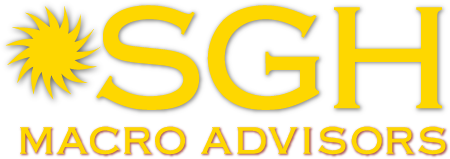Uncertainty over the inflation outlook is setting up an interesting debate inside the Federal Reserve over the path of future policy.
The Federal Open Market Committee on Wednesday released a fresh round of “dot plots,” which map out expectations for where interest rates could be headed over coming years. The chart showed 13 of 18 policymakers projecting at least one rate hike by the end of 2023.
Federal Reserve Chairman Jerome “Jay” Powell downplayed those projections in a press conference Wednesday, noting that the forecasts are highly uncertain and should be taken with a “big grain of salt.”
At the core of the debate is the risk of more persistent inflation, as policymakers attempt to parse out more permanent factors (like demand-driven price increases) from temporary pressures (like supply chain bottlenecks). The projections show the median member expecting inflation (measured in core personal consumption expenditures) rising 3.0% in 2021, but cooling to a pace of 2.1% in 2022.
“The [inflation] risk is something that can factor into people’s thinking about appropriate monetary policy,” Powell told reporters. “The thing is, these are 18 different forecasts, and I can’t stand here and say exactly what was in all 18 people’s mind.”
For Powell, who has attempted to de-emphasize the interpretive power of the dot plot for years, Wednesday’s meeting underscores the communications challenge associated with the already inexact science of forecasting.
“Jay is at pains to not be disrespectful to his colleagues, but also to try to say, ‘don’t put too much emphasis on the dots,’” former Fed Governor Randall Kroszner told Yahoo Finance on Thursday.
Hawks vs. the doves
That challenge could get larger as the media blackout of the policy-setting meeting lifts, which could unleash the more “hawkish” members of the FOMC to explain their views on hiking rates earlier than they had previously forecast.
“Look for discussion about the exit from the more hawkish members of the Committee which are growing in numbers but resistance from the dovish ones,” BofA Global Research wrote Wednesday.
Those same members are also likely to opine on the timing of tapering the central bank’s aggressive asset purchase program, which has been snatching up roughly $120 billion a month in U.S. Treasuries and agency mortgage-backed securities since the depths of the pandemic.
The Fed said in December it would slow the pace of the so-called quantitative easing program when the U.S. economic recovery showed “substantial further progress,” a vague goal that Powell said was “still a ways off” yesterday.
“We should expect rhetoric to tilt more hawkish as Fed presidents stake out positions on ‘substantial progress,’” SGH Macro Advisors’ Tim Duy wrote Wednesday. “The participants raising their dots are going to want to talk about it.”
The next FOMC meeting will take place July 27 and 28.
